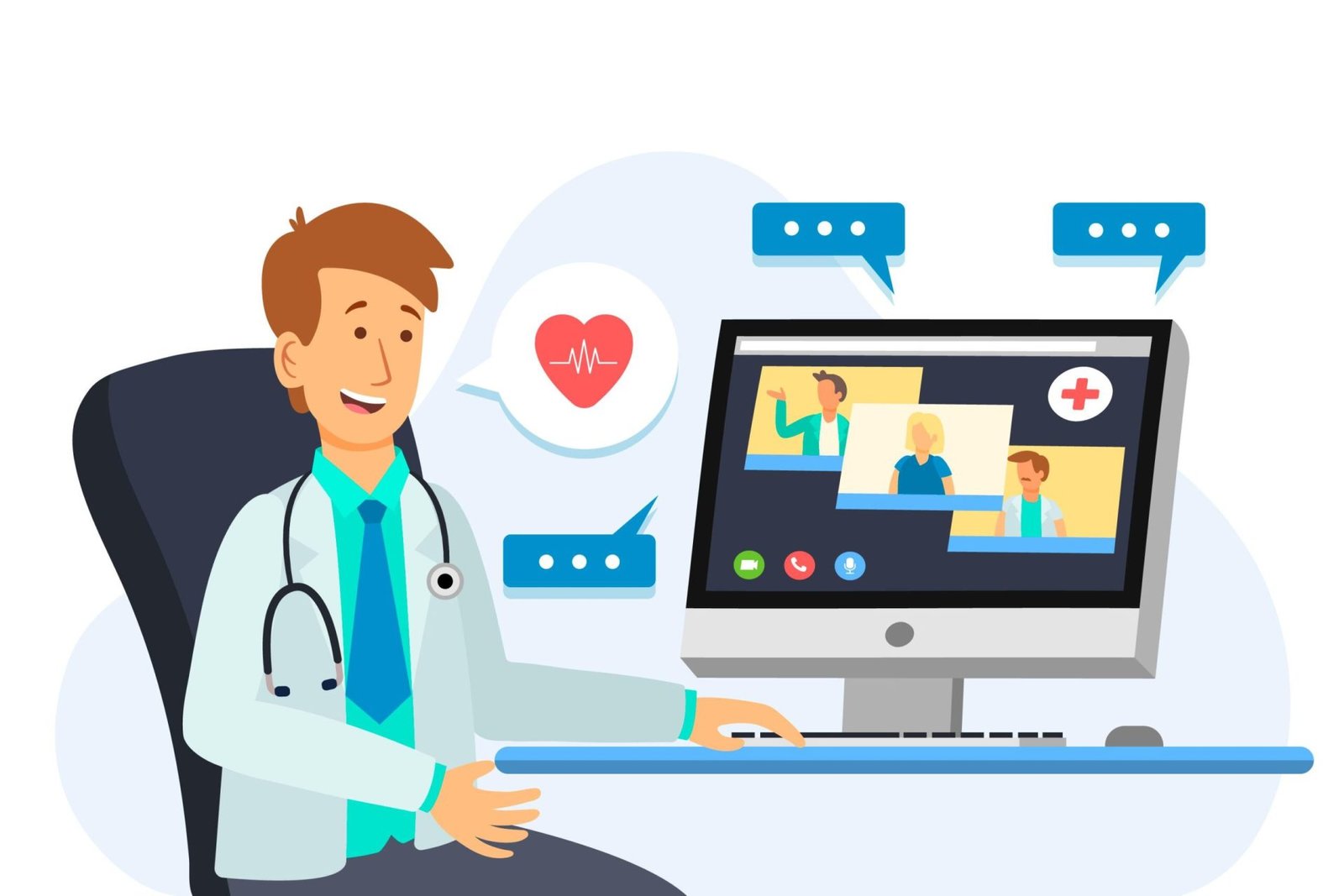The Evolution of Primary Healthcare in the Digital Age
Modern clinics are embracing a wave of innovation, with digital transformation redefining how care is delivered, managed, and experienced. The adoption of primary health solutions is no longer optional, it’s essential for staying competitive, efficient, and patient-centric. These solutions range from telehealth tools to integrated EHRs, reshaping the delivery of primary healthcare services through seamless, tech-powered models.
Why Digital Innovation Is Vital in Primary Care
Meeting Rising Patient Expectations
Today’s patients demand convenience, speed, and personalization. Long waiting times and paper-based records are no longer acceptable. Digital primary health solutions meet these expectations by offering remote consultations, 24/7 access to records, and online appointment scheduling.
Reducing Administrative Burdens
Clinicians spend significant time on administrative tasks. From billing to record-keeping, digital tools like medical software systems in healthcare automate routine operations, allowing doctors to focus more on patient care.
Improving Clinical Outcomes
By streamlining data access and decision-making, digital integrated health solutions help ensure more accurate diagnoses, faster interventions, and better care continuity.
Components of Effective Digital Primary Health Solutions
Electronic Health Records (EHR) for Primary Care
EHRs form the foundation of digital healthcare delivery. Choosing the best EHR for primary care can significantly impact workflow efficiency and data accuracy.
Customizable Templates
Designed specifically for family medicine, pediatrics, or internal medicine.
Patient Portals
Empower patients to access results, request refills, and message providers.
Interoperability
Seamless integration with labs, imaging, and referral systems.
Virtual Primary Care Platforms
Virtual care is no longer an add-on—it’s a core element of primary health solutions.
Video Consultations
Facilitate routine care, follow-ups, and chronic condition management.
Asynchronous Communication
Enables patients to submit concerns without scheduling live sessions.
Remote Monitoring
Tracks vitals and symptoms, ensuring ongoing care from the patient’s home.
Telehealth for Primary Care
Telehealth for primary care delivers accessibility to underserved populations, rural clinics, and patients with mobility challenges.
On-Demand Access
Ideal for minor illnesses, behavioral health, and medication reviews.
Integrated Billing
Ensures proper coding and reimbursement, minimizing claim rejections.
HIPAA-Compliant Platforms
Safeguard patient privacy while maintaining accessibility.
Benefits of Adopting Digital Primary Health Solutions
Enhanced Patient Engagement
Through apps and portals, patients become more engaged in their health journey. They can track progress, receive reminders, and stay informed—ultimately improving adherence and outcomes.
Operational Efficiency
Modern clinics using digital primary health solutions report reduced no-shows, streamlined workflows, and improved care coordination. Tasks like scheduling, billing, and charting become more manageable and less prone to human error.
Data-Driven Decision Making
With access to comprehensive patient histories and analytics, providers can make proactive decisions. Trends in symptoms, medication responses, or lab results become easier to spot with the help of intelligent dashboards and reporting tools.
Scalability and Flexibility
Whether you’re a solo practice or a multi-site clinic, digital solutions offer scalable infrastructure. Cloud-based digital health solutions eliminate the need for expensive hardware, offering pay-as-you-grow models.
Choosing the Best EHR for Primary Care Clinics
User-Friendly Interface
A cumbersome system can slow down clinicians and frustrate staff. The best EHR for primary care emphasizes intuitive design, drag-and-drop functionality, and quick access to frequent workflows.
Custom Clinical Decision Support
Built-in alerts and suggestions based on the latest guidelines help practitioners make informed decisions. This is vital in managing chronic conditions, preventive screenings, and medication safety.
Integrated Communication Tools
Secure messaging between patients and staff reduces phone call volume and speeds up issue resolution. Integration with telehealth for primary care adds even more value.
Implementing Telehealth in Primary Care Clinics
Technology Readiness Assessment
Before launching a telehealth for primary care initiative, clinics must evaluate their tech infrastructure. This includes internet bandwidth, webcam quality, and secure software platforms.
Staff Training and Change Management
Successful adoption requires training clinicians and administrative staff. This ensures consistency, reduces errors, and improves confidence in digital care delivery.
Licensing and Reimbursement Compliance
Different regions may have varied rules for virtual consultations. Partnering with legal advisors or compliance officers ensures that primary healthcare services stay within regulatory boundaries.
Integrating Health Systems for Holistic Care
The Role of Integrated Health Solutions
Modern care requires more than isolated interactions. Integrated health solutions bridge gaps between departments, specialists, and ancillary services.
Care Coordination
Smooth referral pathways and shared patient histories reduce duplication of tests and improve transitions of care.
Population Health Management
Track and manage chronic diseases across patient panels through predictive analytics.
Chronic Care Programs
Monitor diabetes, hypertension, or COPD through alerts, virtual check-ins, and medication tracking.
Connecting with Ancillary Services
Medical software systems in healthcare often include integrations with pharmacies, labs, and imaging centers. This reduces delays and allows real-time sharing of test results and prescriptions.
Challenges in Adopting Digital Primary Health Solutions
Initial Investment and Cost
High upfront costs, especially for small practices, can be a barrier. However, many solutions offer cloud-based or subscription models that reduce capital expenditure.
Data Security and Compliance
Handling sensitive patient data digitally brings security risks. Clinics must ensure all tools used are HIPAA-compliant and incorporate robust encryption and user authentication.
Resistance to Change
Some providers may be hesitant to transition from traditional models. Engaging them early in the implementation process and offering proper support can ease the shift.
Future Trends in Primary Healthcare Services
AI-Driven Insights and Predictive Analytics
Artificial Intelligence will soon become a core part of primary health solutions, enabling risk stratification, early disease detection, and smarter triaging.
Voice-Enabled EHRs
Voice dictation and voice-command features will reduce manual data entry, speeding up consultations and improving record accuracy.
Remote Patient Monitoring (RPM)
From wearable devices to connected glucometers and blood pressure cuffs, RPM will redefine virtual primary care platforms, offering a constant stream of actionable health data.
Personalized Care Pathways
Leveraging big data, clinics will soon offer individualized care journeys based on genetics, lifestyle, and clinical history—blurring the line between reactive care and proactive wellness.
DigitalRX: A Digital-First Platform for Modern Clinics
A Cloud‑Based SaaS Revolution
DigitalRX is a cloud-based software platform tailored for clinics and hospitals, designed to empower providers with digital health solutions that can be launched in as little as 24 hours. It enables practices to deploy branded clinic websites and mobile apps, forming a core part of any primary health solutions strategy.
Branded Clinic Website & App Suite
Clinics can quickly generate their own white‑labeled website and mobile app—fully customized with telemedicine, online appointment booking, and secure messaging interfaces. This is a prime example of virtual primary care platforms in action, blending patient engagement and brand identity seamlessly.
Telehealth & Appointment Tools
With DigitalRX, patients can book in‑person or virtual consultations, receive automated SMS or email appointment reminders, and use secure chat features for follow‑up questions—making it a comprehensive telehealth for primary care solution.
Patient & Provider Apps
The doctor app offers instant access to patient health profiles, scheduling management, video conferencing, and e‑prescribing—all in one interface. It exemplifies how medical software systems in healthcare can streamline clinician workflows while supporting primary healthcare services.
Follow‑Ups, Engagement & Insights
DigitalRX automates post-visit messaging and medication reminders, and clinics can publish health updates, tips, and news through a “doctor wall” feature—boosting patient adherence and engagement in a branded environment.
How DigitalRX Fits into Your Digital Primary Health Solutions Strategy
As a Telehealth Enabler
DigitalRX enables clinics to offer telehealth for primary care as part of an integrated system—no need for separate tools. This aligns well with your wider digital health solutions ecosystem and enhances scalability.
Complementing the Best EHR for Primary Care
While DigitalRX doesn’t offer a full EHR, it integrates smoothly with EHR systems and serves as a strong front‑end layer: powered telemedicine, bookings, messaging, and patient‑facing tools. When paired with the best EHR for primary care, it provides a full-stack integrated health solutions experience.
Enhancing Patient Access and Operations
By providing secure online access, automated bookings, reminders, and teleconsultations, DigitalRX supports improved access to primary healthcare services while reducing administrative burden.
Recommendations for Integration
- Launch your branded website and mobile app through DigitalRX for streamlined virtual primary care platforms.
- Integrate your existing or chosen EHR system to keep comprehensive health records synced behind the scenes.
- Use DigitalRX’s messaging and follow-up features to keep patients engaged and reduce no-shows.
- Implement e‑prescribing, appointment scheduling, and patient portal features seamlessly—all part of your broader primary health solutions ecosystem.
Conclusion: Building the Clinic of Tomorrow, Today
Digital transformation is not just a trend—it’s a necessity. With the right primary health solutions, modern clinics can revolutionize how they deliver care. By integrating tools like virtual primary care platforms, selecting the best EHR for primary care, and embracing telehealth for primary care, healthcare providers can meet the needs of today’s digital-savvy patients.
The synergy between medical software systems in healthcare and human-centered care is the path forward. It’s time for clinics to move beyond outdated processes and embrace the full potential of digital health solutions for a future-ready, patient-first experience.
Let’s Get You Started Today
Feel empowered to elevate your clinic with a purpose-built platform that delivers telemedicine, patient engagement, scheduling, and branding—all in one. Discover how DigitalRX can seamlessly blend into your primary healthcare services strategy and enhance primary health solutions across the board.
Ready to transform your clinic into a digital-first experience? Schedule a personalized demo to see how it works for your setting, customized, branded, and launch-ready fast.
FAQs
1. What services does DigitalRX provide to support a digital-first clinic experience?
DigitalRX offers a suite of cloud-based digital primary health solutions, including branded clinic websites, mobile apps, telemedicine capabilities, online appointment booking, secure patient portals, e‑prescribing, and automated patient engagement tools.
2. How does DigitalRX enhance telehealth for primary care?
DigitalRX includes built‑in video consultation tools that let patients connect via your clinic’s website or mobile app. It also automates scheduling, reminders, and follow‑up messaging—making it a cohesive telehealth for primary care platform.
3. Can clinics adopt a hybrid model—combining virtual and in‑person care?
Yes. DigitalRX is designed for easy implementation of a hybrid care model: clinics can offer both virtual primary care platforms and on‑site visits with smooth transitions between modalities.
4. In what ways does DigitalRX improve patient engagement and adherence?
With features like secure in‑app messaging, pill reminders, follow‑up notifications, and a clinic-branded “doctor wall” for updates, DigitalRX drives stronger patient engagement and higher follow-through rates.
5. How quickly can a clinic go live with DigitalRX?
The platform lets clinics launch a branded website and mobile app within 24–48 hours, allowing fast deployment of essential primary healthcare services and extending your primary health solutions ecosystem quickly.











